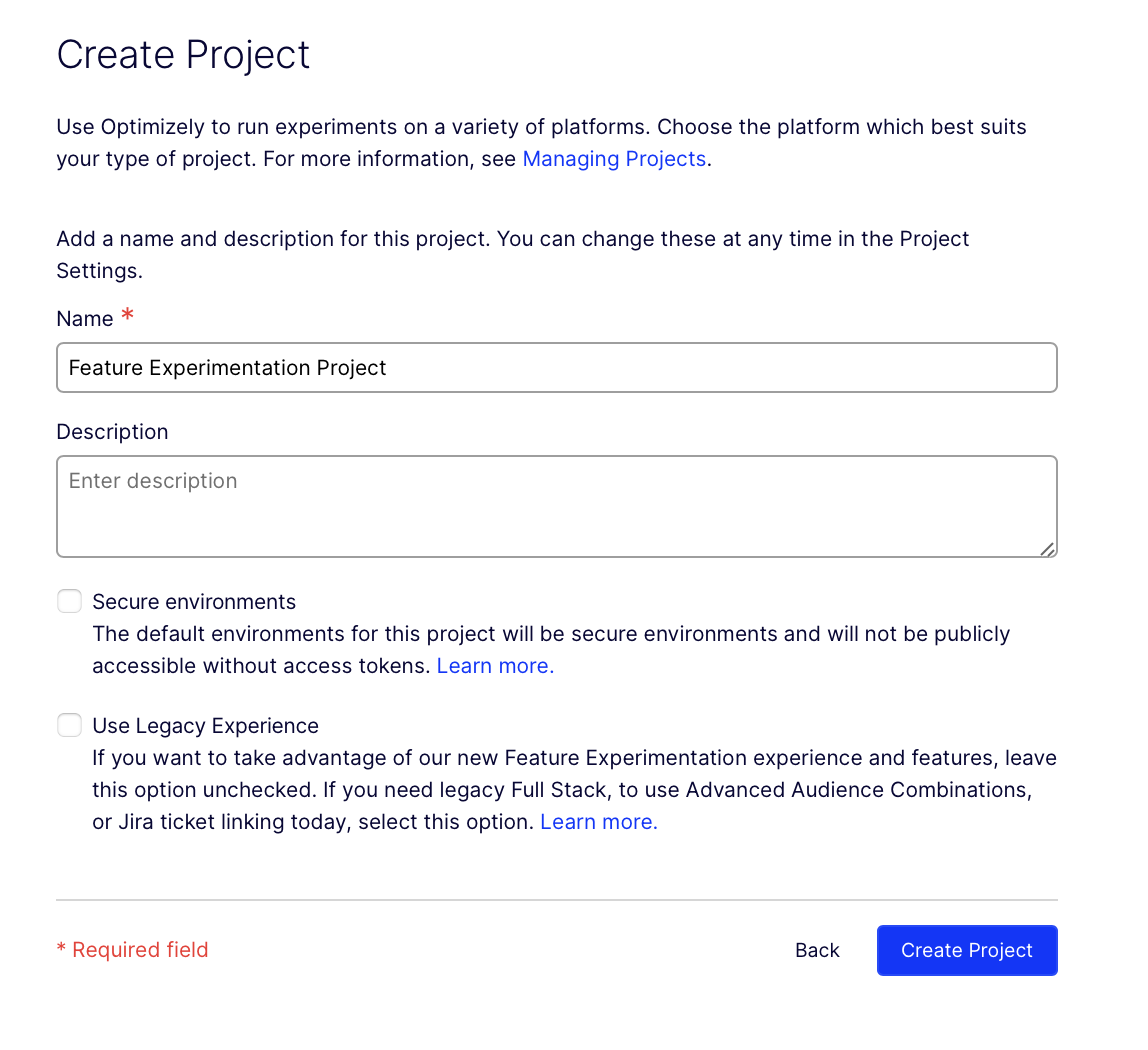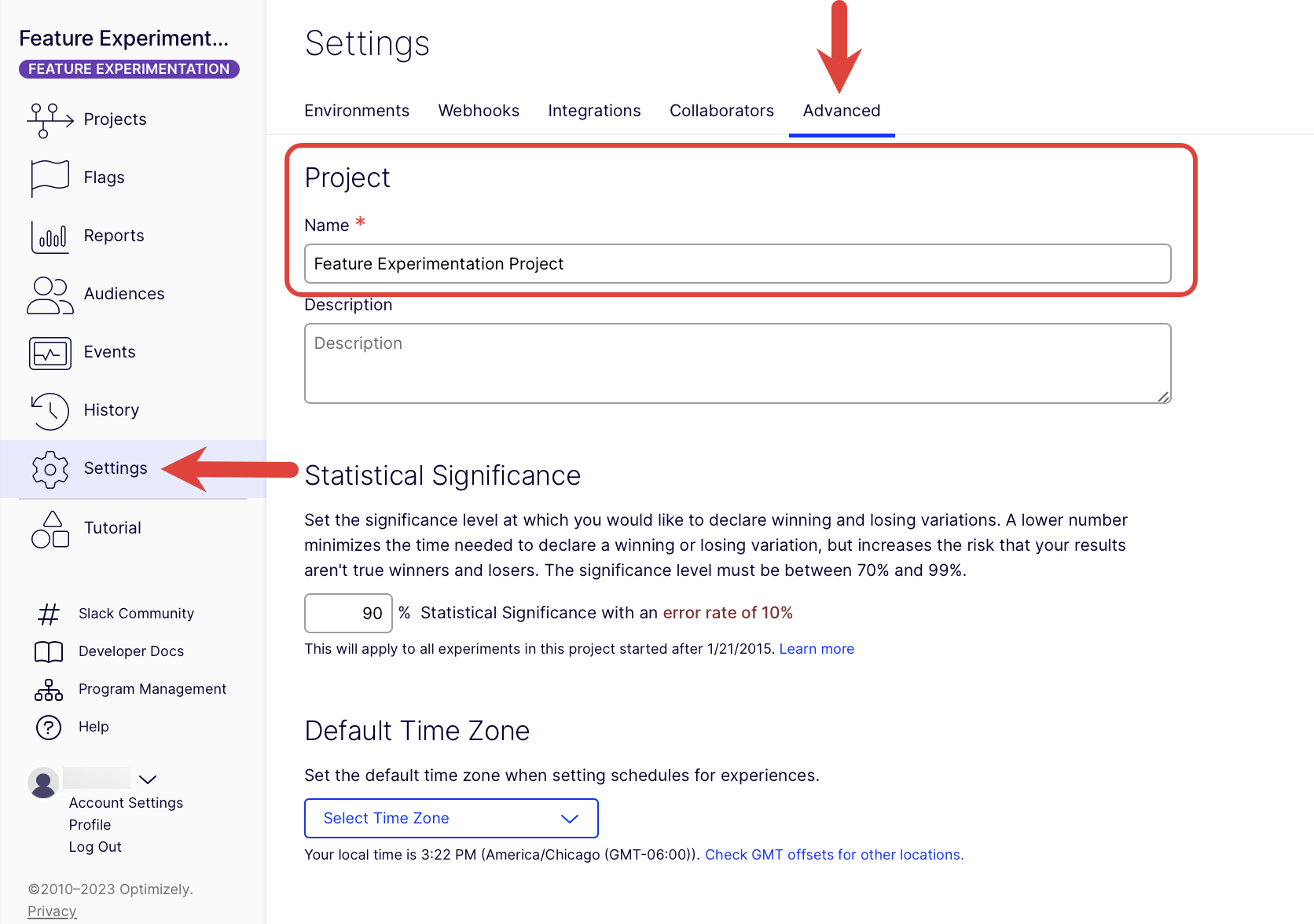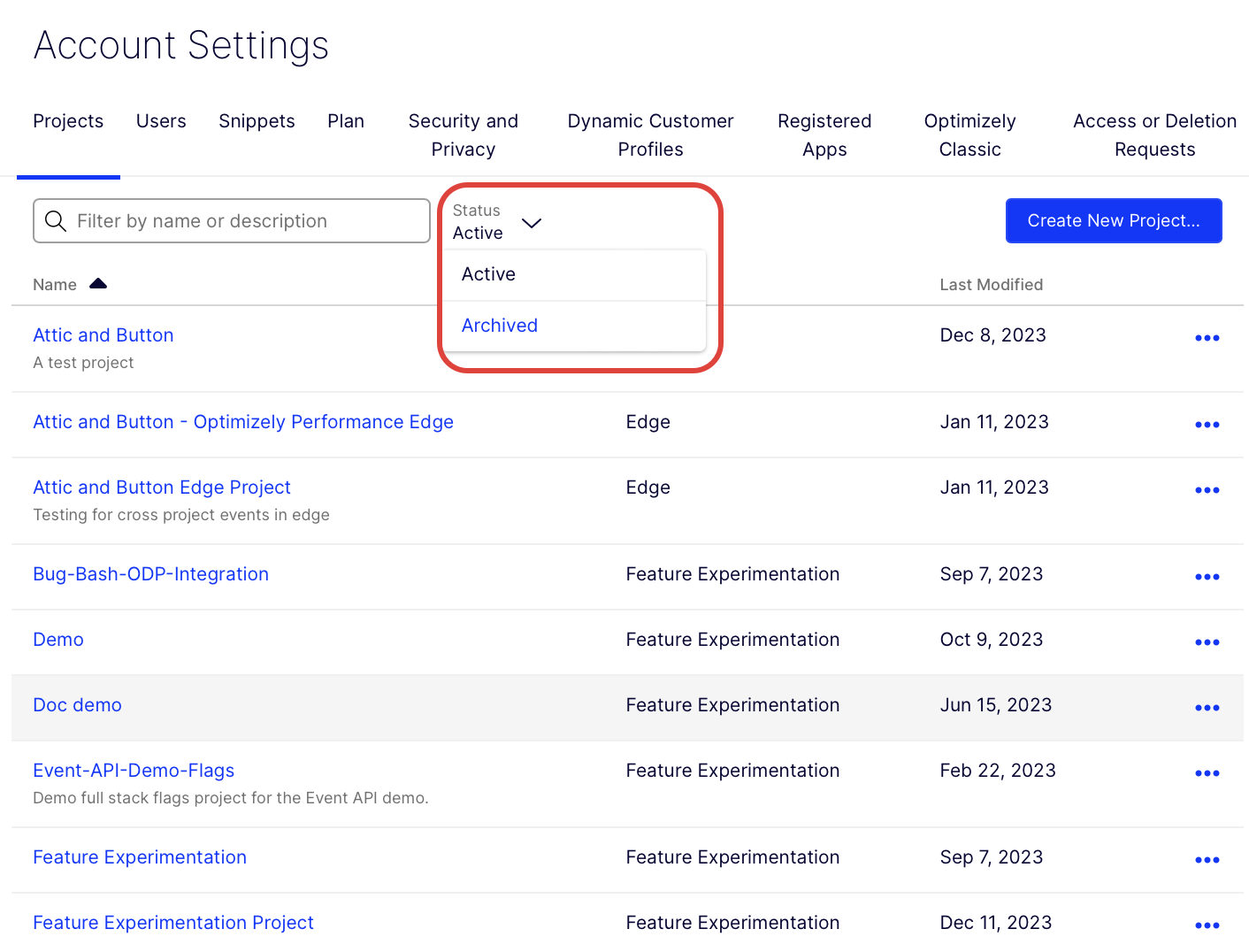Manage projects
How to manage projects in Optimizely Feature Experimentation.
Feature Experimentation projects help organize experiments within a single application or service that you are developing. You can use projects in any way to organize your work, but in most cases, you should set up one project for each application or service. You can also
- configure separate projects for different environments.
- configure a separate project for each customer in a multi-tenant scenario.
Note
Your account already includes an Optimizely Feature Experimentation project, so creating another project is optional.
All Optimizely Feature Experimentation projects look similar, regardless of what SDK language you plan on using. Optimizely Feature Experimentation provides language-specific code samples through the interface and documentation. In practice, the Feature Experimentation SDKs are language agnostic. You can use a datafile from any Feature Experimentation project type to initialize an Optimizely client within your app, regardless of which language you use for your project.
Create an Optimizely Feature Experimentation project
To create another Optimizely Feature Experimentation project:
-
In Optimizely, click Projects > Create New Project.
-
Select Feature Experimentation as your project type.

-
Name your new project and optionally add a description.

-
(Optional) Select the Secure environments checkbox.
-
Click Create Project.
After creating a new Feature Experimentation project, you can create experiments, targeted deliveries, or a multi-armed bandit optimization.
Create Optimizely Feature Experimentation projects using multiple SDKs
You can use multiple SDKs to run experiments that span all parts of your technology stack. Use any Optimizely Feature Experimentation SDK in any Feature Experimentation project, even if they do not match your primary programming language. Select the primary language based on the application where you will assign visitors to experiments.
For example, you are running experiments in your Python backend and tracking events in a web browser using JavaScript. In this example, you would use Python as the primary language because that is where your experiment code runs.
Note
You can track conversion events for your experiments in any part of your technology stack in any language.
Rename a project
- Go to Settings > Advanced.
- Enter the project name in the Name field.
- Click Save.

Note
Updating the project's name only changes the name. It does not change the project ID.
Archive and unarchive a project
Archive
- Go to Projects > Manage Projects.
- Find the project in the list and click More (...).
- Click Archive.
Unarchive
-
Go to Projects > Manage Projects.
-
Filter the list of projects to Archived.

-
Find the project in the list and click More (...).
-
Click Unarchive.
Note
You can not delete a project, only archive it.
Updated 4 months ago